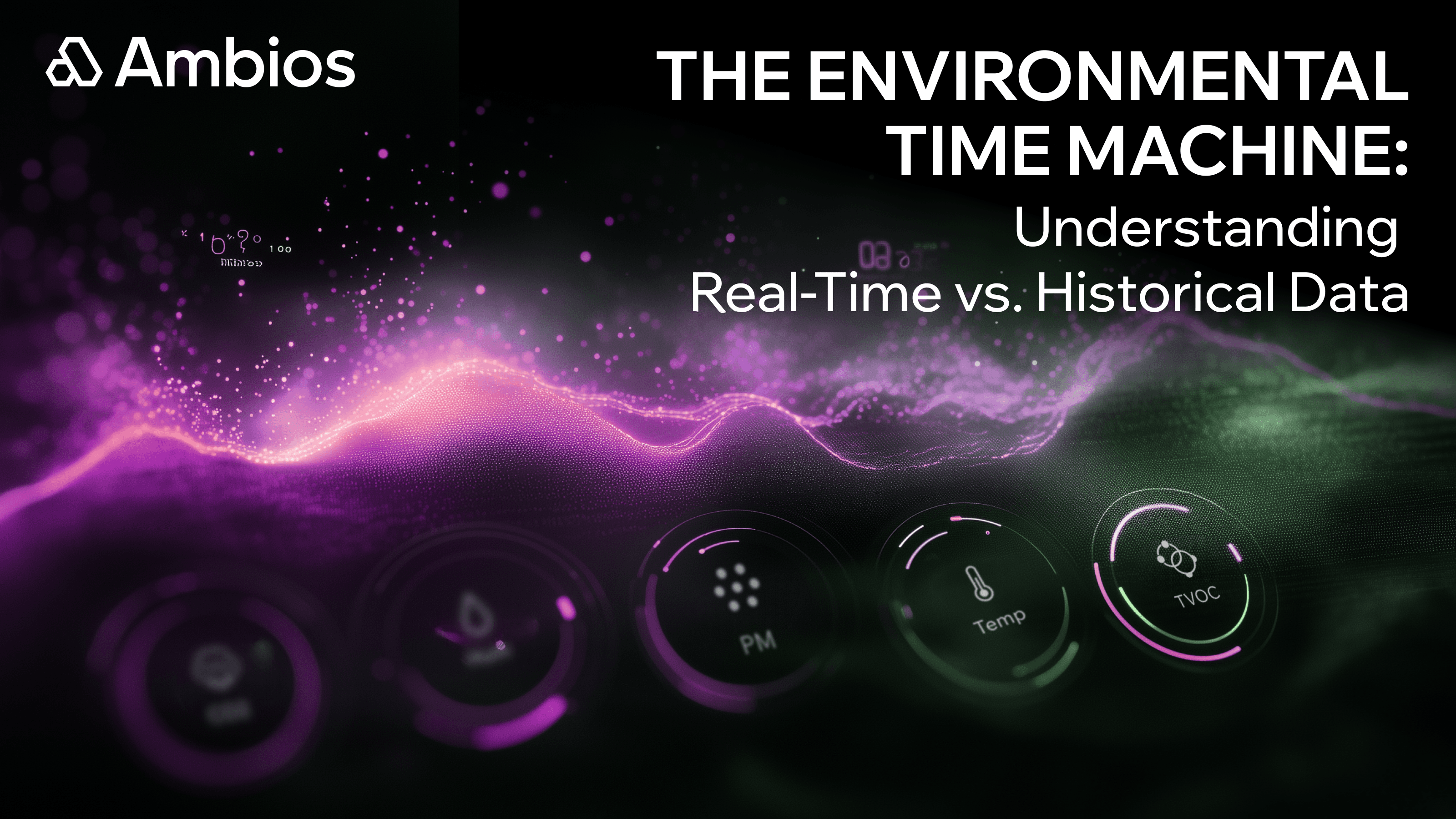The Environmental Time Machine: Understanding Real-Time vs. Historical Data

In our quest to build a sustainable future and foster a deeper understanding of our planet, data is the cornerstone. From tracking the subtle shifts in our local air quality to analyzing the long-term trends of climate change, environmental data empowers us to make informed decisions and take meaningful action. However, navigating the vast landscape of environmental information can sometimes feel like deciphering a complex puzzle. Two key pieces of this puzzle are real-time data and historical data. While both are invaluable, they offer distinct perspectives and serve different crucial purposes.
Think of environmental data as a continuous story of our planet. Real-time data provides us with the immediate, up-to-the-minute snapshot of what’s happening right now – the current chapter unfolding before our eyes. Historical data, on the other hand, offers the rich context of the preceding volumes, revealing the narrative arc, the recurring themes, and the significant turning points. Understanding the difference between these two types of data, and recognizing their synergistic power, is essential for anyone seeking to engage with environmental issues effectively.
Real-Time Data: The Pulse of the Planet
Imagine tuning into a live weather report. You get instant information about the current temperature, wind speed, and precipitation in your area. Real-time environmental data functions similarly. It captures the immediate conditions of our surroundings, providing a dynamic and constantly updating stream of information.
For example, in the context of the Ambios Network, our sensors are continuously monitoring air quality, temperature, humidity, and other crucial metrics in various locations. This real-time data allows us to:
- Track immediate pollution levels: If there’s a sudden spike in particulate matter in a city, real-time data can identify it instantly, triggering alerts and enabling swift responses.
- Monitor current weather conditions: Sensors can provide up-to-the-minute temperature and humidity readings, crucial for various applications from agriculture to public health.
- Assess immediate environmental changes: Real-time data can detect sudden shifts, indicating potential issues that require immediate attention.
The power of real-time data lies in its immediacy. It provides the information needed for timely interventions, allowing us to react effectively to unfolding environmental events and manage our resources in the present moment.
Historical Data: Unraveling the Trends of Time
While real-time data shows us the “what’s happening now,” historical data provides the crucial context of “how did we get here?” and “where are we heading?” It encompasses the vast records of environmental conditions collected over extended periods – years, decades, even centuries.
Think of historical climate records. By analyzing temperature data from the past century, scientists can identify long-term warming trends and understand the impact of human activities on the planet’s climate. Similarly, historical air data can reveal how pollution levels have changed over time, highlighting the effectiveness (or lack thereof) of environmental regulations and conservation efforts.
Historical data allows us to:
- Identify long-term trends: By analyzing data over extended periods, we can discern significant patterns, such as the increasing frequency of extreme weather events, or gradual changes in biodiversity.
- Establish baselines: Historical data helps us understand the “normal” conditions of an environment against which current changes can be measured and assessed.
- Predict future scenarios: By analyzing past trends, scientists and policymakers can develop models to project future environmental conditions and plan accordingly.
- Evaluate the effectiveness of interventions: Historical data allows us to assess whether past environmental policies and actions have had the desired impact.
The Synergistic Power: Why We Need Both
Real-time and historical environmental data are not mutually exclusive; in fact, they are most powerful when used in conjunction. Together, they provide a comprehensive and nuanced understanding of our planet’s dynamic systems.
Imagine tracking an air pollution event in a city. Real-time data alerts us to a sudden spike in pollutants. However, without historical data, we wouldn’t know if this is an isolated incident or part of a recurring pattern that has been worsening over time. By comparing the real-time spike with historical air quality records, we can gain a deeper understanding of the event’s significance and develop more effective long-term strategies to mitigate air pollution.
Similarly, when studying the impacts of climate change, real-time monitoring of current weather patterns can be linked to historical climate data to understand if observed anomalies are part of a larger trend or simply natural variations. This integrated approach allows for more accurate assessments and more effective responses.
The Ambios Network: Harnessing the Power of Environmental Data
At Ambios Network, we recognize the vital importance of both real-time and historical environmental data. Our decentralized network of sensors continuously collects real-time information, providing an up-to-the-minute pulse on our environment. Simultaneously, the accumulation of this data over time builds a rich historical record, allowing for in-depth analysis and the identification of crucial trends.
By making this comprehensive environmental data accessible, we empower individuals, communities, researchers, and organizations to:
- Gain immediate insights into their local environmental conditions.
- Understand the long-term changes affecting their surroundings.
- Contribute to a global understanding of our planet’s health.
- Develop data-driven solutions for a sustainable future.
Understanding the difference between real-time and historical environmental data is not just an academic exercise; it’s a crucial step towards becoming more informed and effective environmental stewards. Join the Ambios Network in harnessing the power of this data to build a healthier and more sustainable world for all. Explore our resources and discover the insights waiting to be uncovered.